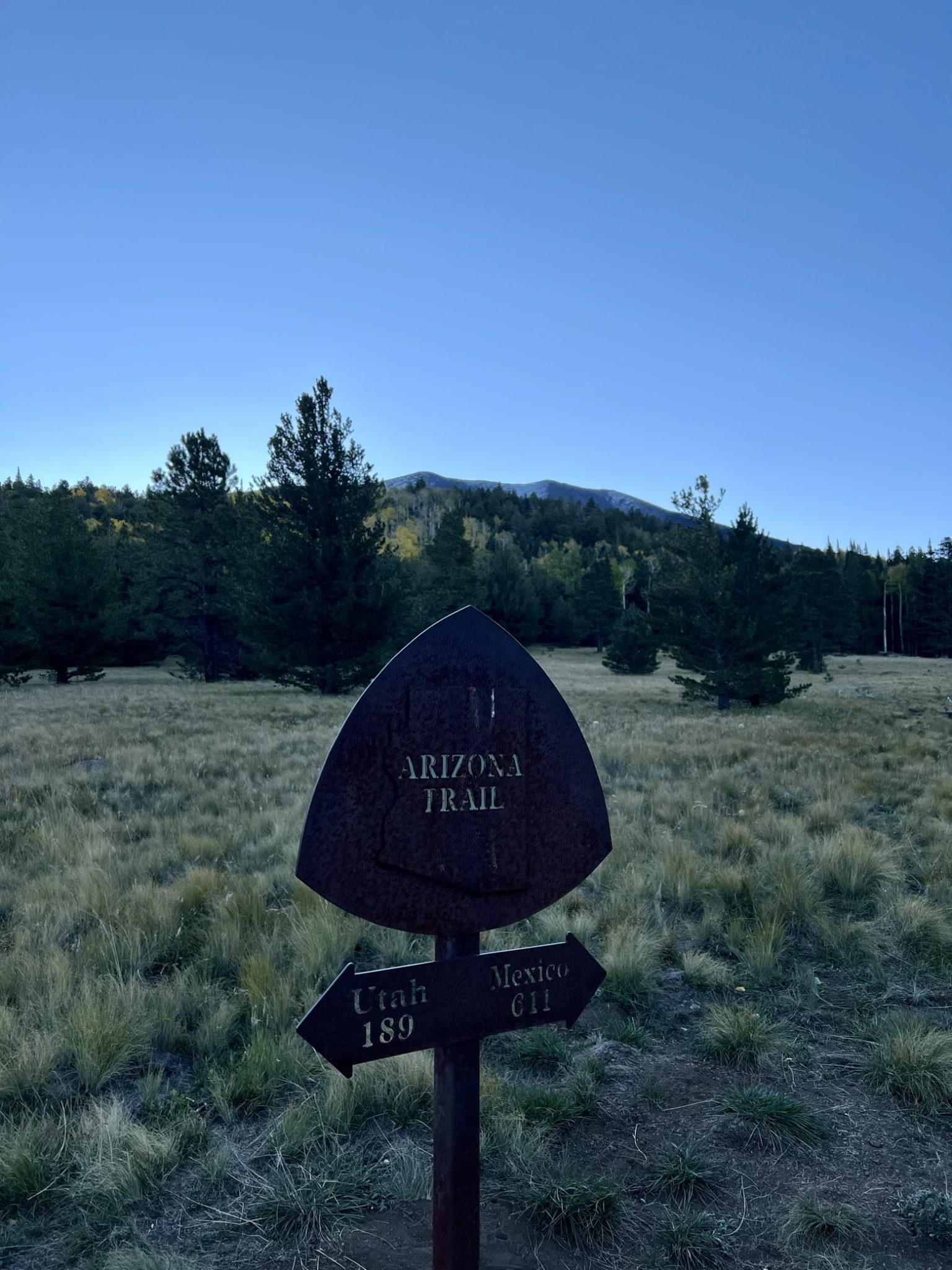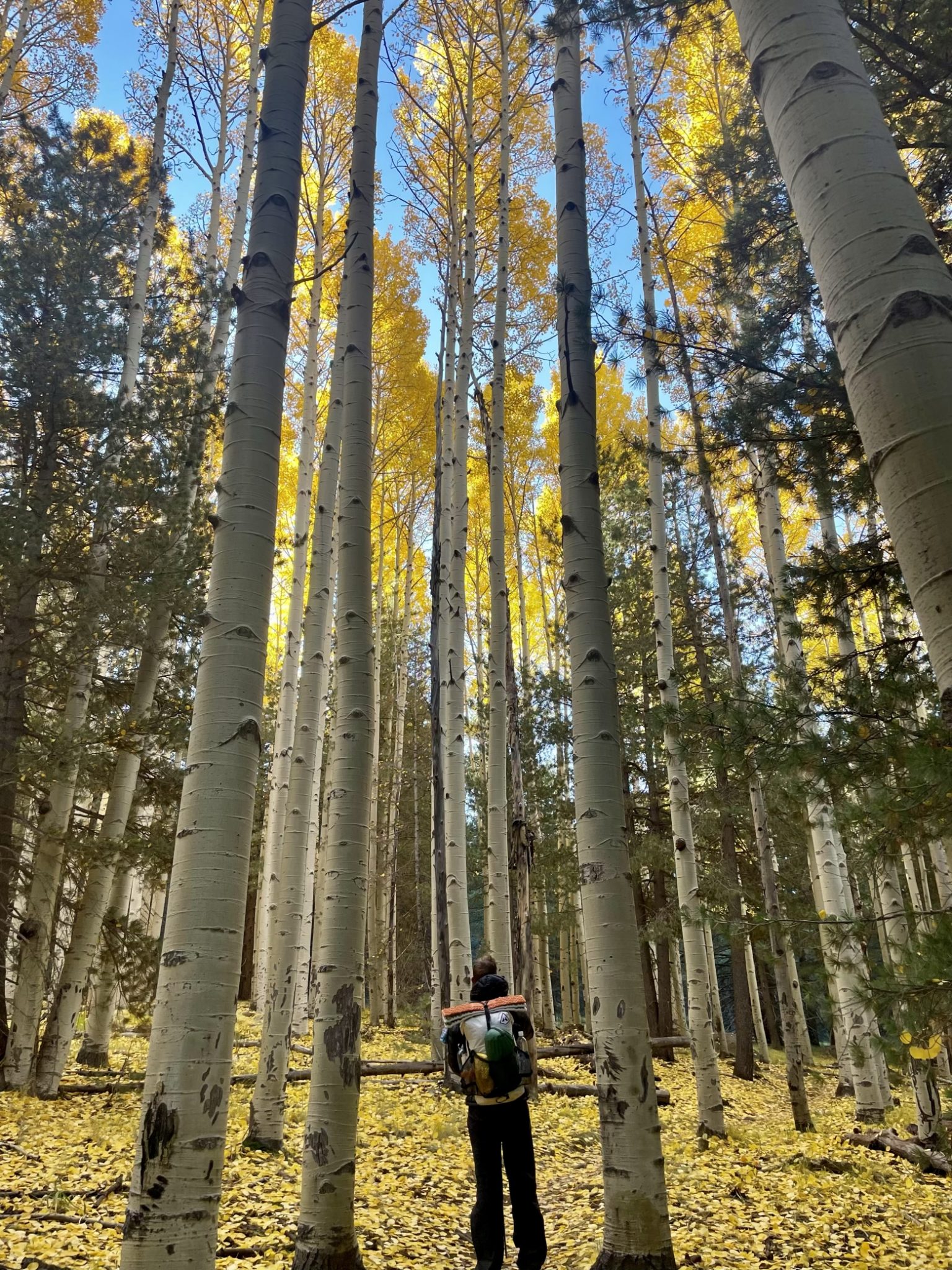Date: 10/11/21
Miles: 23.0
Total Miles: 205.9
Some things—most things—are more than they seem. Hiding in plain sight, things we often attribute a hasty label to and understanding of harbor qualities that make them exceptional. Worthy of greater attention. Of greater appreciation. It’s as true of things as it is of people.

And yet, we don’t take notice. Don’t stop to understand in more depth the things our eyes pass over. As humans, our eyes seemingly tell us everything we need to know about the world around us. But the cruel trick of being a species so tilted to favor the fidelity of the information our eyes send to our brains—over all other senses—is the breadth and depth of what that hardwiring omits. Obscured by that intricate system of identification, categorization, and confirmation or rejection of visual assumption, so much is lost.

Hiking along the trail on a perfectly blue morning, the air felt the way your mouth does after a strong peppermint candy. On the far side of a meadow, where nothing slowed the onslaught of the wind, bright yellow clusters hung far above atop stately white strands, while a carpet of yellow illuminated from beneath our feet.
Trusting only what our eyes relayed, it’s simple enough to say that this was a stand of aspens and a breathtaking one, at that. But to stop there would be to ignore so very much. In the peak of fall color, it’s easy to appreciate the aspen. Look more closely, and you understand that beauty is the least of its marvels.
The aspen is a tree out of place. When you stop to admire its yellow autumn brilliance, it’s typically heightened by the contrast against neighbors that are more often than not dark green conifers. Like a boxer punching above its weight class, the aspen finds its home with trees more outwardly adapted to the cold and unforgiving environment of higher elevations.
Root systems that can live for thousands of years. Bark that is capable of photosynthesis all on its own. And leaves connected to stems via stalks, known as petioles, that are flattened to reduce the drag of wind during storms. Adaptations without which the aspen wouldn’t be coloring slopes nearly as high as the one we now traversed. Adaptations our eyes are poorly suited to appreciate at a glance.
Brightened by yellow from both above and below, I stared up to watch the wind swirl through the leaves like invisible fingers twirling through strands of hair. The sound of the fluttering was a subtle but constant white noise, a soundtrack as steady as the waves of the ocean. An image might be worth a thousand words, but seeing and hearing it for yourself is worth far more...
When we realized that Flagstaff wouldn’t get any closer by staring at the treetops, we left the temple of aspens we’d sauntered into and pressed on down the trail. Aspens floated into our past and a future full of ponderosa pines quickly became our present.

Dirt, dust, and volcanic rock mixed to form the trail we now descended from the San Francisco Peaks and down to the outskirts of Flagstaff. As the AZT became one in the same with the city’s urban trail system, mountain bikers and day hikers popped up to enjoy the same sunny, blustery fall weather.
When our steps finally fell upon blacktop, it was with a particular gratitude for the two days of rest that was now nearly ours and for the comforts of home that would shield us from tonight’s forthcoming snow storm. A storm that hikers might dread, but the aspens surely do not.

Latitude/Longitude: 35.19631,-111.6505

